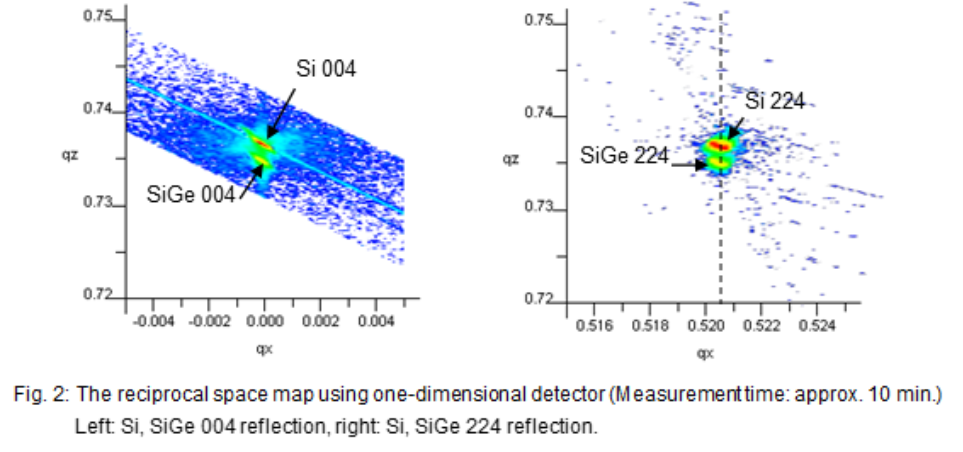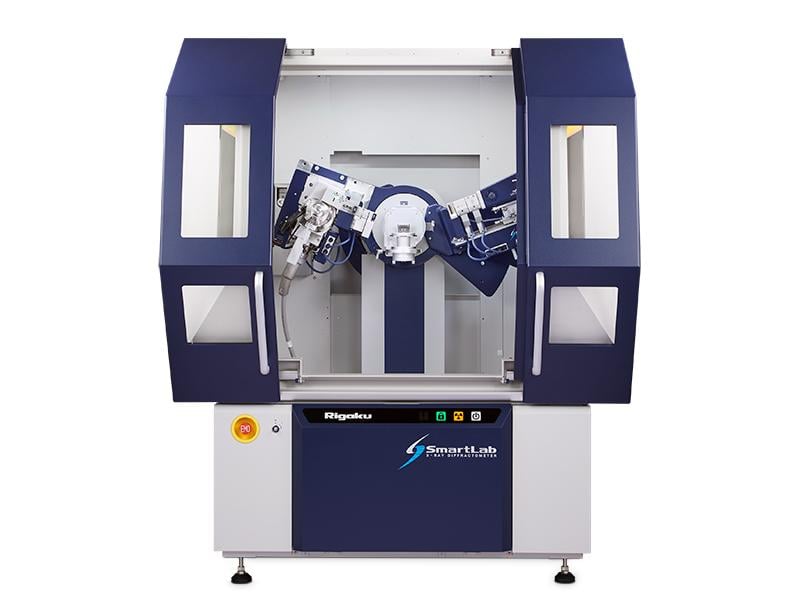HIGH SPEED RSM OF AN EPITAXIAL FILM USING A 1D DETECTOR IN STILL MODE
Introduction
Transistors using silicon-germanium (SiGe) have low power consumption and operate at high speed. The device performance is affected by the Ge concentration, lattice strain (relaxation), and the crystal quality of the SiGe layer. Reciprocal space mapping using a one-dimensional (1D) detector efficiently revealed these characteristics in short timeframes. This example demonstrates how this can be achieved in around 10 minutes.
Measurements and Results
Since a 1D detector has a large number of detection elements in the 2θ direction, and it has angle information for each element, it is possible to measure 2θ profile without scanning. This measurement mode is called “Still mode". High-speed reciprocal space mapping can be completed in approximately 10 minutes by repeating exposures with ω step scan and fixed 2θ (Fig. 1).

Figure 2 shows the high-speed reciprocal space map of a Si0.97Ge0.03 epitaxial film (film thickness 380 nm) on Si 100 substrate. It was confirmed the SiGe film grows without inclination of the lattice on the Si substrate because the values of qx (Å-1) of Si 004 and SiGe 004 were equal. Furthermore, since the values of qx (Å-1) of Si 224 and SiGe 224 are equal, the lattice constants in the in-plane direction of Si and SiGe are identical. Thus, we found that the epitaxial lattice of SiGe grew on the Si substrate without mismatch, i.e., 0% relaxation rate.

► Automated multipurpose X-ray diffractometer SmartLab
► High-resolution and high-speed 1D detector D/teX Ultra 250
► Hybrid pixel array multi-dimensional detector HyPix-3000
► Integrated X-ray analysis software SmartLab Studio II (HRXRD plugin)



